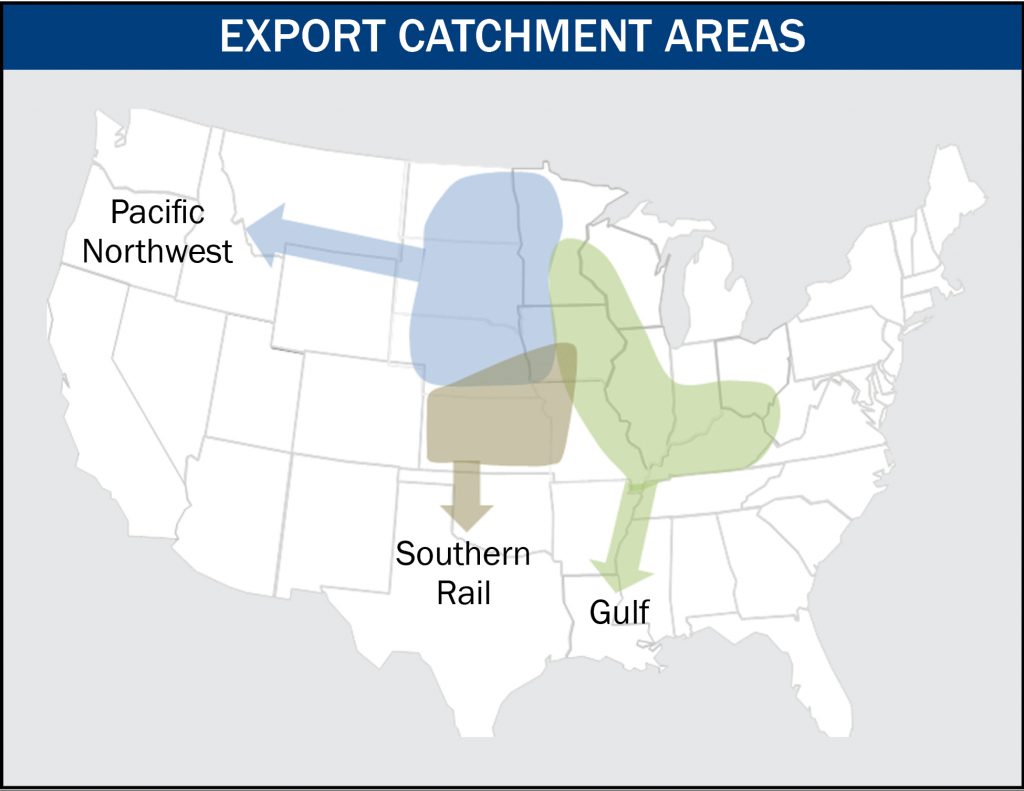C. Statistical Analysis
The sample test results for the grade factors, moisture, chemical composition and physical factors were summarized as the U.S. Aggregate and also by three composite groups that supply corn to each of three major ECAs, as follows:
- The Gulf ECA consists of areas that typically export corn through the U.S. Gulf ports;
- The Pacific Northwest ECA includes areas that export corn through Washington, Oregon and California ports; and
- The Southern Rail ECA comprises areas generally exporting corn to Mexico by rail from inland subterminals.
In analyzing the sample test results, the Council followed the standard statistical techniques employed for proportionate stratified sampling, including weighted averages and standard deviations. In addition to the weighted averages and standard deviations for the U.S. Aggregate, weighted averages and standard deviations were estimated for the composite ECAs. The geographic areas from which exports flow to each of these ECAs overlap due to available transportation modes. Therefore, composite statistics for each ECA were calculated based on estimated proportions of grain flowing to each ECA. As a result, corn samples could be reported in more than one ECA. These estimations were based on industry input, export data and evaluation of studies of grain flow in the United States.
The 2018/2019 Harvest Report contains a simple average of the quality factors’ averages and standard deviations of the previous five Harvest Reports (2013/2014, 2014/2015, 2015/2016, 2016/2017 and 2017/2018). These simple averages are calculated for the U.S. Aggregate and each of the three ECAs and are referred to as the “5YA” in the text and summary tables of the report.
While the lower level of precision for these quality factors is less than desired, these levels of Relative ME do not invalidate the estimates. Footnotes in the summary tables for the quality factors indicate the attributes for which the Relative ME exceeds ±10.0%.
References in the “Quality Test Results” section to statistical and/or significant differences between results in the 2017/2018 Harvest Report and the 2018/2019 Harvest Report, and in the 2016/2017 Harvest Report and the 2018/2019 Harvest Report, were validated by two-tailed t-tests at the 95.0% confidence level.

